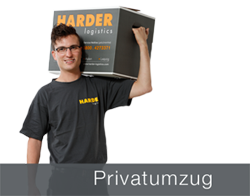Pharmaceuticals and Cosmetics
Polished logistics for pharmaceuticals and cosmetics
Process optimisations by pharmaceuticals and cosmetics manufacturers, both within a facility and company-wide, increasingly require the relocation of highly sensitive and often extremely heavy plants. HARDER logistics guides the company from the start with the relocation of these high-investment plants.
The reference list of HARDER logistics for the pharmaceutical industry includes companies like Dr. Renschler, Böhringer Ingelheim and Altana. With regard to cosmetics, the specialist service provider from Neu-Ulm counts international producers such as Beiersdorf, L’Oréal, Avon and La Prairie among its clients.
Good preparation includes catalogues with security-relevant standards, the production of customised transport beds and investment in special equipment. The next step is to move the plants, usually weighing between 3 and 20 t, which sometimes requires physical restructuring to suit the layout.
Filling line going, process technology staying
Relocations tend to affect packaging and filling lines, e.g. shrink-wrapping pills into blister packs and inserting them into folding boxes including labelling. HARDER logistics regularly moves such lines with machinery like cleaning/sterilising plants, screwing devices, micro scales and labellers. They have many uses, which means they can also be used for the packaging process of other drugs.
Process technology is a different matter. This can primarily be used for just one drug or a specific ointment. Given the rather static properties of the pure production machines, there is often no reason to relocate these.
Planning ahead and regulations
Depending on the project, the planning ideally begins up to six months or a year before the relocation phase. HARDER logistics clarifies all details in advance.
This includes:
- Various legal provisions and national and international regulations.
- Individual behavioural measures and special regulations, which deviate sharply from one another due to different corporate cultures and company histories, as well as the individual safety rules.
- Such a catalogue is usually 20 to 40 pages long, ranging from the risk analysis and assessment to the movement possibilities (protective clothing).
The requirements on service providers specialising in the pharmaceuticals and cosmetics sector are just as important. HARDER logistics’ expertise includes the following:
- Know-how in the field of hygiene regulations
- Specialists: mechatronics engineers, electrical engineers, master electricians, master mechanical engineering mechanics, installers
- Often required: combination of mechanical and electrical expertise
- References, experience in the pharmaceuticals sector
- Investments in special equipment
Cosmetics and pharmaceuticals hate dust
Dust-free relocation is the biggest challenge in this sector. At every stage of the move we are aware that ultimately the well-being of the patient is crucial to the success of the company.
The filling processes often take place in clean or ultra-clean rooms. These are zones that require protective clothing to be worn and are equipped with specialised air conditioning.
HARDER logistics applies the following rules in your rooms:
- We install locks in which to isolate the components.
- Only staff with access authorisation to the clean or ultra-clean room may accept the machinery for set-up.
- The different access authorisations and functions are perfectly coordinated (personnel inside and outside the lock).
Sensitivity when selecting packaging
HARDER logistics manufactures some tools on an order-specific basis, such as the transport beds on which the machines are moved. We mainly use hardwood – sometimes combined with an aluminium floor. Machines are covered with a dust cover for transport, preventing particles from penetrating. Overseas shipments require compliance with national and international packaging regulations. This includes adding drying agents to switch and control cabinets to absorb moisture, preventing a surge when the plant is switched on. A vacuum is also created for pharmaceutical plants before the freight is stowed in overseas crates or containers, preventing humidity from entering.
The actual move is completed comparatively quickly. The minimal time requirement for an internal change is half a day. For larger projects, those involved in pharmaceuticals and cosmetics should allow two to three weeks for a relocation.
Info box
What triggers an internal relocation in the pharmaceuticals and cosmetics industry
- The pressure of competition – often internal competition with production sites overseas as well – focuses the spotlight more heavily on internal logistics.
- The structure of the factory has usually evolved over time due to expansion, changes or redevelopments of the range, rather than in accordance with process-optimised logistics in terms of route optimisation, sequence planning and the location of processing technology, filling and packaging lines.
- General conditions in the property: in urban centres there is no possibility of expanding at the location. This results in continual optimisation.



